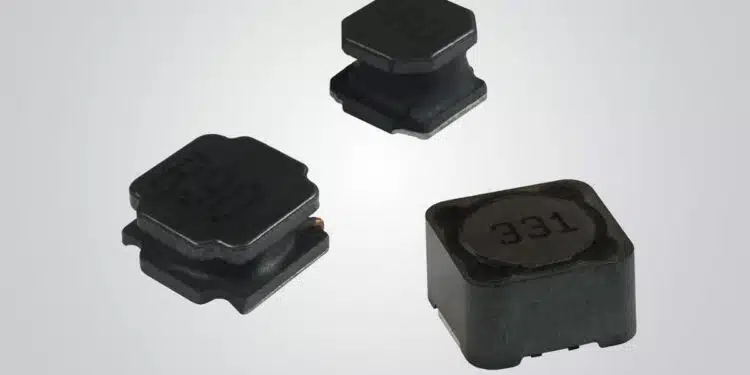Vishay Intertechnology, Inc. announced that it has extended its shielded IFDC and semi-shielded IFSC series of wirewound, surface-mount ferrite inductors with three new devices in the 2020DE, 3232DB, and 5050HZ case sizes.
Offering improved performance at a lower cost than previous-generation ferrite solutions, the Vishay Dale inductors combine higher inductance and current ratings with lower DCR for computer and consumer applications.
The IFDC-5050HZ, IFSC-2020DE-01, and IFSC-3232DB-01 match the performance of previous-generation ferrite core solutions — but with a 60 % smaller size — while offering enhanced performance compared to similar-sized devices, including higher operating temperatures to +125 °C and operating voltages of 120 V. Additionally, the IFSC-2020DE-01 and IFSC-3232DB-01 feature 40 % lower DCR, while the IFDC-5050HZ supports higher saturation currents up to 14 A.
While other high-performance inductors typically offer a maximum inductance of 100 mH, the devices released today achieve significantly higher values of 470 mH for the IFSC-2020DE-01 and IFSC-3232DB-01 and 1 mH for the IFDC-5050HZ. Furthermore, by utilizing efficient manufacturing techniques and a simple bobbin style wirewound construction, IFSC and IFDC series inductors provide a more cost-effective solution over IHLP inductor technology while still delivering high quality and reliability
With the enhanced efficiency enabled by their low loss ferrite core construction and low DCR, the devices are ideal for use as energy storage inductors in a variety of DC/DC conversion topologies found in consumer electronics and battery-powered devices. Moreover, the IFSC and IFDC families make cost-effective solutions in differential LC filter topologies for noise suppression on power lines. Focus markets include consumer entertainment devices such as televisions, sounds bars, and audio and gaming systems; general computing equipment such as desktops, monitors, and scanners; as well as other household appliances. In these applications, the IFDC-5050HZ — which features a coil enclosed in an exterior magnetic material that contains stray magnetic flux — minimizes EMI and crosstalk to nearby components.
Device Specifications
| Part number | IFSC-2020DE-01 | IFSC-3232DB-01 | IFDC-5050HZ |
| Shielding | Semi-shielded | Semi-shielded | Shielded |
| Size (mm) | 6.0 x 6.0 x 4.5 | 8.0 x 8.0 x 4.2 | 12.3 x 12.3 x 8.0 |
| Inductance (mH) | 1 to 470 | 0.9 to 100 | 3.3 to 1000 |
| DCR typ. (mW) | 14 to 2000 | 6 to 290 | 11 to 1640 |
| Heat rating current (A) | 0.35 to 4.2 | 1 to 7.8 | 0.9 to 10.3 |
| Saturation current (A)(1) | 0.4 to 8.5 | 1 to 11 | 0.9 to 14 |
| SRF typ. (MHz) | 2 to 110 | 6 to 85 | 1.3 to 35 |
Samples and production quantities of the IFSC and IFDC inductors are available now, with lead times of 10 to 12 weeks.
































